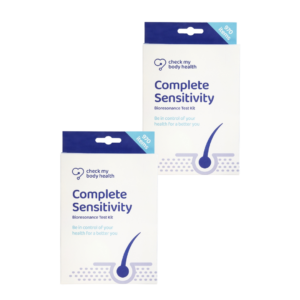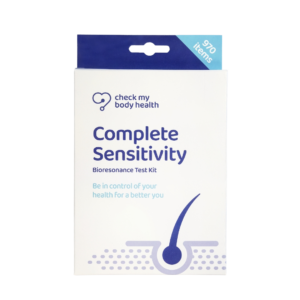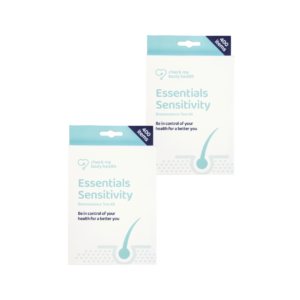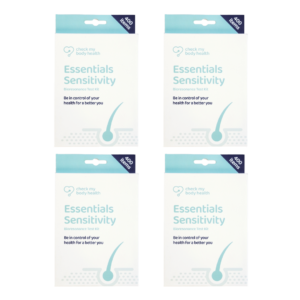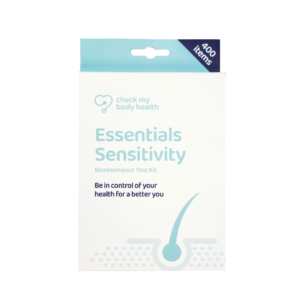It’s surprising how many people suffer from food allergies and food intolerances, although the two should never be confused. It can also be difficult sometimes to get to the bottom of what is causing the problem. If allergy is suspected medical professionals more often than not will recommend a test or a series of tests to isolate the protagonist. Food intolerance is not generally tested for via the NHS, it is usually through food diaries and food elimination that intolerance is identified.
What is the difference between a food allergy and a food intolerance?
Food allergy is caused by the body reacting to one or more specific foods. The immune system confuses proteins in the food as a threat. When your defense system, or immune system senses this threat, it releases a number of different chemicals, including histamine – it is these chemicals, which cause the physical symptoms experienced in an allergic reaction. Allergy symptoms range for mildly irritating to severe, in the most serious of cases it can cause anaphylaxis, which can be fatal if not treated quickly.
Food allergies can be broken down into three different types:
IgE-mediated – this type of allergy can produce symptoms within a matter of minutes but up to a couple of hours after contact. There are also delayed or late phase allergic reactions, in which symptoms can occur up to 6 hours post contact. This type of mediated allergy can be diagnosed through IgE blood testing and understanding a clinical history of symptoms..
Non-IgE mediated – symptoms can take a while to manifest themselves (up to several hours or even a day). Non-IgE mediated food hypersensitivity includes disorders, which affect the gastrointestinal tract such as coeliac disease, food-protein induced enterocolitis syndrome and allergic proctocolitis. These types of conditions can be difficult to diagnose, as there aren’t currently tests available for all of them.
Oral Allergy Syndrome – also known as Pollen-Food Syndrome. This is caused by a reaction to eating fresh fruit and vegetables, which comes on quite rapidly after consuming the items and more likely if foodstuffs are eaten raw or undercooked. Reactions are usually mild to medium in severity, and not life-threatening, merely uncomfortable in the mouth and throat area. However, there are exceptions to the rule, and some individuals may suffer more than others.
A food intolerance is exactly what it says – your system will not accept certain foods and this will cause you to have some potentially nasty physical reactions, generally in your stomach and bowels a few hours after your have consumed the food. It is unlikely that an intolerance would cause you serious health issues, just a lot of discomfort for your digestive system and inconvenience in your day to day life. Your skin may also be affected. However, it is important to take steps to avoid foods that cause the intolerance by dietary control.
Are there any specific food groups that can cause allergies?
Any food can cause an allergy, and there has been a steady diagnostic increase in the UK population over the last 20 years or so.
There are foods, which are the most common culprits in causing allergic reactions. If these items are contained within a product they must, by law, be emboldened in the ingredients list on the packaging:
- Eggs
- Fish and shellfish
- Milk
- Nuts – mainly peanuts, but other nuts can also cause allergic reactions (brazil nuts, almonds, walnuts etc – these are known as tree nuts)
- Soy
- Wheat
- Mustard
- Sesame
- Celery
Allergies know no boundaries – they can be present as soon as a child is born or develop later in adulthood. Many children will leave allergies behind once they reach school age, but this is not always the case.
What are the common symptoms of food allergies?
Symptoms can vary from person to person, but can include the following:
- Rashes – itchy and red, uncomfortable and potentially raised and ugly
- Irritation in the mouth and throat – can feel quite tingly or even itchy and may cause problems with swallowing
- Sneezing and itchy, watery eyes
- Runny nose
- Wheezing/ difficulty in breathing
- Vomiting and/or diarrhea
- Swelling of the lips/ face
- Coughing
- Sneezing
- Dizziness or imbalance, lightheadedness or feeling ‘not quite there’
Sufferers may experience one, several or all of these symptoms plus others depending on the type of allergy they have. They can also experience different symptoms to different items.
What is of paramount importance is the recognition of more severe symptoms in the case of anaphylaxis. All of the above symptoms can occur, but worsen very rapidly. If anaphylaxis is suspected it is essential you call for help immediately and if the individual carries an epi pen ensure that this is administered.
Make a habit of checking food labels – this may delay your shopping experience, but avoid any chances of you consuming the wrong things for your allergy.
How do I discern if I have food intolerance, not an allergy?
It could be said that food intolerance is not as serious as an allergy but it can be irritating and frustrating, especially when you can’t get to the bottom of the cause. It can sometimes be a long process before you understand what causes it. The symptoms of intolerance are mainly digestive difficulties, but there are many other illnesses that can provoke this kind of reaction. A check with your medical professional is advisable if you suffer regularly from stomach problems, pain or bowel problems.
Whilst some intolerances can be tested for like lactose intolerance and histamine intolerance, there are others like non-coeliac gluten-sensitivity and carbohydrate malabsorption which are more challenging to identify. The NHS does not test for food intolerances; these are usually identified using a food diary and subsequent item elimination.
The phrase ‘no pain, no gain’ is significant when it comes to understanding whether you have food intolerance. Monitoring your food intake is an excellent route to take, but it does take time and effort. As basic as it may seem, keeping a food diary of what you eat for every meal, what if any symptoms occur, and how long after eating do you feel uncomfortable or unwell (do include bloating, stomach pain, nausea, vomiting or loose bowels), will tell you potential ‘no-gos’ in your diet.
Elimination Diet
Once you recognise a pattern in the items, which are potentially causing you problems, try cutting out that particular food for at least 2-3 weeks and even up to 6 weeks, to see if your symptoms subside.
Once the elimination part is over, slowly re-introduce these foods and watch for symptoms however slight or full on. Sometimes a small amount will cause your intolerance to activate, but possibly it could only happen if you eat these foods in excess.
Some dieticians recommend that you start by eliminating the more ‘obvious’ foods that can cause intolerance, such as dairy products or wheat products (commonly known as lactose intolerance or wheat intolerance). If this makes a significant difference to your wellbeing, it is likely that one or both of these will be the culprit. If not, you need to systematically work through other foods that you incorporate into your diet by eliminating them, and then re-introducing.
Other products that may cause intolerance
In todays’ world of fast foods, pre-packaged goods and additive-laden (and hidden) items in food, this could be another reason why you have food intolerance.
For instance, if you are a fan of Chinese food or even the Macdonalds’ offerings, you will be subject to a great deal of MSG (mono sodium glutamate), which can cause the reactions associated with food intolerance. There are other additives that may also give you the same symptoms, even in coffee or most forms of alcohol. Equally so, if you have switched from refined sugar to a sugar alternative, this can also cause a reaction.
If you do buy processed or pre-packaged foods, please check the labels for additives and food colourings, E numbers and food enhancers, all of which can cause intolerance symptoms.
It is important that you know as far as possible, the source of your fresh food such as meat, fish and vegetables. Whilst organic food has been on the increase for many years, some farming is still exercised using chemicals in the soil or food fed to animals. There is also the danger of pesticides being present, as well as any bacteria or other contaminants.
You are what you eat, and in terms of food intolerances, take the time to find out what causes it and enjoy life much more.



